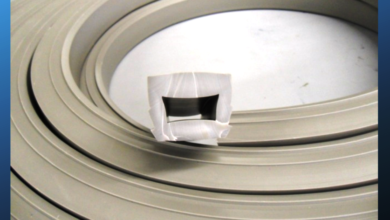Innovative Smart Materials for Industrial Construction

Claimed to be the future of the contemporary world, smart buildings, also called the “buildings of the future,” are engineered with advanced, intelligent technology to enhance and simplify human lives. It should go without saying that the smart revolution has been welcomed and has provided its users with a number of very real benefits. Although smart materials have many applications in technology, business, science, and medicine, their most widespread and widespread use is still in civil engineering due to their adaptability.
Let’s examine the analysis below to gain a thorough understanding of the most popular “smart materials”:
1. Smart Concrete
Concrete is a material that is commonly used in construction projects. Scientists have developed a novel type of concrete that has the ability to store electricity for an extended period of time and contains potassium ions. When energy output levels dropped, this so-called “smart concrete” would take over and power a house using the reserve supply of energy it had saved up. This would suggest that the materials used to build your home’s walls may one day store energy and act as a battery.
2. Straw
This is an older material that is currently gaining traction again. Its suitability for use in smart building design has been established. It is an affordable, long-lasting, and ecologically friendly material. When compared to traditional insulators, the insulation offered by the walls constructed from straw is doubled. Because straw structures are known to be carbon negative, using these straws could result in fuel savings of up to 90%. Straws are a common and inexpensive food co-product that could play a major role in a low-carbon future. Because straw is among the best and most affordable materials that helps us to achieve our goals of a better and more intelligent construction, straw is therefore very important.
3. Nanotechnology
Initially limited to space research, the pharmaceutical industry, and the electronics sector, the building industry has since embraced the use of materials based on nanotechnology. The current building stock needs to be transformed from an energy consumer to an energy producer because of how quickly our resources are being depleted. Multiple layers of insulation are commonly found in traditional insulation materials such as walls, floors, and roofs. Building envelope energy efficiency standards and the integration of renewable energy sources could both see significant advancements from the application of nanoscience. Nanoscience balances the needs of aesthetics with architectural constraints, among other considerations, without sacrificing the building’s functionality.
4. Metals that change shape
Certain metals can change shape when subjected to pressure and then eventually return to their original form. These substances, referred to as “shapeshifting metals,” are highly advantageous when constructing buildings in seismically active and hurricane-prone areas.
5. Clear wood
Among the materials that have actively established a reputation for themselves is transparent wood. Not only is this material more resilient than glass, but it also functions as a superior insulator. It is one of the few components needed to create smart buildings that decomposes more quickly than plastic.
6. Indicators
When developing a smart infrastructure, careful consideration must be given to the sensor locations. In order to obtain pertinent data and information, internet-connected devices must be placed strategically. This is because doing so guarantees “accuracy,” which, on the other hand, facilitates decision-making quickly. Most builders are familiar with the clever idea and make sure that the best use of resources occurs because they are the ones who set the construction apart from others.
It follows that the discussion above clearly indicates that each of the aforementioned components is pricey. Building a smart infrastructure is definitely more expensive than building traditional infrastructure. However, the operating costs will undoubtedly decrease significantly once the structure is equipped with all the elements needed to be classified as smart technology. Just picture the savings if fuel expenses were cut by 90%. There are many other overhead expenses that will go down as a result of the smart buildings’ effective use of resources and technology. Thus, the next time you are looking to buy an office space or a place to live, it is always important to look for smart buildings.

